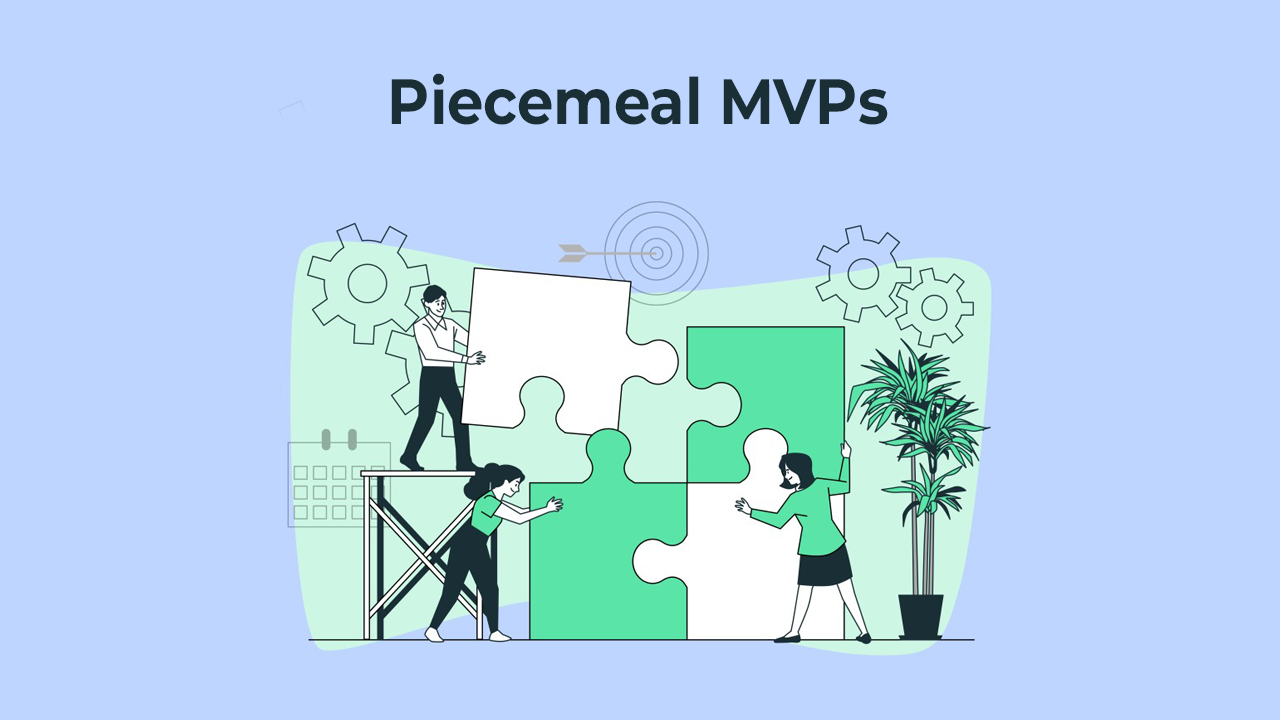
Are you developing a Minimum Viable Product (MVP) and want to ensure its success? Testing is a crucial step in the MVP development process that can make or break your product's future. Join us as we explore seven tried-and-tested strategies that will guide you through the MVP testing journey. From setting clear testing goals to leveraging user feedback and analyzing metrics, this comprehensive guide will equip you with the knowledge and tools needed to conduct thorough and insightful MVP testing.
Table of Contents
Whether you're a startup founder, product manager, or development team member, this article provides practical insights and actionable tips to ensure your MVP is on the path to success. Discover the key strategies that can help you iterate, improve, and refine your product, ultimately leading to greater user satisfaction and increased market potential. Minimum viable test saves extra effort as it identifies and solves the loopholes at the initial stage.
In this article, I provide you with an overview of how to build an MVP and an in-depth look into top strategies for MVP testing.
MVP For Startups: How it Helps Reduce Development Costs
Read More
Top 7 Best MVP Testing Strategies
1. Customer interviews

Did you know UberCab was initially targeted at customers (passengers) only? During the MVP testing stage, they learned that a much better solution would be to meet the needs of both passengers and drivers. That’s how Uber came into being, with the help of insights gained during MVP testing in the form of real-world customer interviews.
Once you have built an MVP, the most honest feedback you can get is by asking open-ended questions to your potential audience. Encourage unfiltered, unrestricted responses about how your MVP will be useful to your customers. In order to get the right kind of insights, you must know how to leverage first-hand interviews in the right way.
There are many ways in which you can get the responses you are looking for. For example, list down problems that your product aims to solve and ask your customers about them. Tell them to rank these problems and understand how desperate they are for the solutions.
Then offer your MVP as a solution and ask them if that’s something they would like to try. It’s also an opportunity for you to gauge insights about your final product. Asking things like what else would you wish the product could do for you can help you reshape your MVP into a much more viable final product.
“You'll only get the answers you are waiting for if you address the question in a vis-a-vis setting. Not only will your customer be more honest, but their answers will also be as authentic as it can be since there's no way they can lie about something that they have only seen for the first time. These are realtime reviews and they will surely be pivotal in improving your MVP.”
Find your testers
Sometimes, it's also extremely beneficial to identify the audience that may be interested as well as the ones who may not be interested in using your MVP. These people can work as testers for you and give you actionable feedback about your MVP.
Sometimes, it's also extremely beneficial to identify the audience that may be interested as well as the ones who may not be interested in using your MVP. These people can work as testers for you and give you actionable feedback about your MVP.
“We release the product, let's say an alpha build of an app. Then we solicit feedback via surveys from the testers we've selected, and interview testers who are on the positive and negative end of the spectrum. These are people who often feel very strongly one way or the other, and their opinions can really help us hammer out issues or improve features.”
- Dan Bailey, President, WikiLawn
“Collect some users who might possibly use your product and have them try out the MVP in a test environment. You will very likely see the best results from this one as the user personas match your target audience. If they can derive value from the product, then you might be good to go!”
- William Chin, Web Consultant, PickFu.com
2. Landing pages

Buffer, the renowned social media tool, was once just a landing page, actually two landing pages. The first page showed its features and the second was a signup page. According to its co-founder Joel Gascoigne, that’s all he did to validate his MVP.
Landing pages are one of the most trusted answers to how to test an MVP. A landing page helps you find out whether your MVP interests your target audience. Conversely, it can also tell you what kind of buyers are interested in your product. You never know, you could discover a whole new treasure of potential market through a landing page MVP.
Even though landing pages are very common, not many budding entrepreneurs make the most of them. At best, landing pages are treated as an opportunity to build an email list of potential buyers. But it’s so much more than that! The kind of data you get out of landing pages can be a gold mine of insights for you.
For instance, you can try out a couple of different versions of a landing page. These versions could show your MVP in various different ways, from design to features and pricing models.
Now, based on the number of and the kind of people who sign up for those different versions, you will be better to understand how viable a solution your MVP is and what kind of users it appeals to the most. Google Analytics can do the job well for gathering all the relevant traffic and sign-up data.
“A/B landing page tests, hot maps, and pre-order sales pages are good ways to test pricing. You know that an MVP is ready for testing when it is capable to test the riskiest hypotheses. Instead of perfecting the design or technical details, spend more time collecting feedback from users in multiple iterations. Less is always more.”
- Anastasia Schmalz, Founder, GenerationNomads.com
9 Ways Building An MVP With React Native Helps Startups
Read More
3. Crowdsourcing campaigns

Source: https://techcrunch.com/2012/07/08/how-pebble-and-other-product-phenomenons-killed-it-on-kickstarter/
Crowdsourcing campaigns are majorly leveraged to raise funds for bringing a product idea to life. However, if done the right way, you can use it as one of the top MVP testing strategies too.
Under a crowdsourcing campaign, entrepreneurs explain their startup ideas and provide relevant details as to how they plan to use the money received out of the campaign. If users like the idea and are ready to invest in it, it clearly indicates the idea is worth pursuing. If there are investors today, there will be buyers tomorrow
However, the major challenge here is to make your MVP stand out from the rest. Platforms like Kickstarter and IndieGoGo have become tremendously popular now. There are hundreds of campaigns being launched on these and many more platforms. So, you have to present your idea that not only appeals to the users but also sounds convincing enough for them to invest in it.
The Pebble E-Paper Watch killed it on Kickstarter as the first smartwatch within an affordable price range. With a highly effective crowdsourcing campaign, they raised over $10 million in less than 40 days!
Architecture Presentation Patterns: MVC vs MVP vs MVVM
Read More
4. Ad campaigns

An ad campaign can be a holistic market research tool for you if you know how to use it well. Just like landing pages, ad campaigns on social media channels too can provide you with highly useful analytics. However, the kind of analysis you get through ad campaigns is pretty sophisticated.
Ad campaigns enable you to make the most of the buyer persona you must have created for your MVP in the initial stages. Based on this persona, ad campaigns allow you to position your MVP to the specific sections of the audience that you want to reach out to. You can show your ads to people on the basis of gender, location, age group, and even the interests of your audiences.
Moreover, an ad campaign is your chance for A/B testing your MVP. You can create different ad campaigns for different audiences. Along with that, you can also choose to create ads highlighting different aspects of your MVP to gauge what appeals to your audience the most.
Analytics like click-through rates will help you polish the positioning of your MVP which in turn will help you launch your MVP in the most effective way.
“Let's say I wanted to create a profitable niche e-commerce business around Unicorn apparel. First I'd test interest in the idea, creating a website and some blog articles to see if I could get organic SEO traffic with a new site. Seeing that organic traffic can be the mechanism to build the business, I'd create a Facebook page and share memes and other sharable content to generate interest, a community, and learn more about my potential demographic. This would then inform me of what sort of merchandise to create based on user feedback.”
- Austin Iuliano, Social Media Consultant, Austin Iuliano Inc
POC vs. MVP vs. Prototype: The Strategy Closest to Product-Market Fit
Read More
5. Wizard of the Oz

Just like magic, this MVP testing strategy is all about creating an illusion in the mind of your audience. Wizard of the Oz can be your savior if you don’t have enough funds to build a complete MVP. Under this approach, what your audience sees is much more sophisticated than what you actually build.
Zappos, the pioneer in the online shoe retailing business, is a classic example of this MVP testing technique's success. The founder Nick Swinmurn had a great idea of selling shoes online but he wasn’t sure whether people would be willing to buy shoes without trying them on. He didn’t want to invest money in an idea whose demand was still only in his head.
He set up a website to verify whether his business would create value in the market. He then went to local shoe stores, clicked pictures of the shoes, and put them for sale on his website. This way, he made his customers believe that Zappos was a brand with a huge inventory and a supply chain system in place. In reality, he would buy the shoes and get them delivered to his customers for the first few orders.
Now that he knew his business model had a demand, he went ahead and created a full-fledged startup. Later in 2009, the million-dollar shoe retailer was acquired by the eCommerce giant Amazon.
Thus, if you have an interesting idea, the wizard of the oz is your go-to MVP testing approach. It yields the maximum benefits when the idea is fresh and it is possible for you to carry out initial processes manually.
“The common scenario for testing an MVP is to hand it to a small group of loyal customers and start generating feedback. Of course, before an MVP can happen you go through a rapid prototyping step, creating an interactive click-through model of an application. That way, an MVP is sort of pre-tested even before it’s developed.”
- Joe Tuan, CEO, Topflight Apps
6. Hallway MVP testing

Hallway MVP testing is a rapid and informal approach to gathering user feedback on a Minimum Viable Product (MVP). In this method, developers or product teams engage with potential users or colleagues by conducting impromptu tests in a "hallway" or informal setting. Observing users interact with the MVP and soliciting their immediate reactions can gather valuable insights quickly and cost-effectively.
During hallway MVP testing, the focus is on gathering qualitative feedback and uncovering usability issues or pain points. The informal nature of these interactions allows for candid and honest responses, providing a realistic assessment of the MVP's strengths and weaknesses. This method helps validate assumptions and serves as a valuable tool for refining the product's design and functionality before investing further resources in development.
Hallway MVP testing is a valuable technique for startups and product teams looking to obtain rapid feedback and make iterative improvements. By leveraging the power of direct user interactions, this approach enables the identification of critical user experience issues early on, leading to a more polished and user-centric final product.
7. Piecemeal MVPs

Piecemeal MVPs, also known as modular or component-based MVPs, involve building and testing individual features or functionalities of a product before integrating them into a cohesive whole. Rather than developing and launching a complete MVP, this approach focuses on independently creating and testing specific components or modules. Each module addresses a specific user need or feature, allowing for rapid testing and iteration.
With piecemeal MVPs, the development process becomes more manageable and iterative. By breaking down the product into smaller, testable units, teams can validate assumptions, gather user feedback, and make informed decisions about which features to prioritize or refine. This approach minimizes the risk of investing significant resources in a full-scale MVP that may not resonate with users, as feedback from testing each module can inform subsequent development and improve the overall product.
Piecemeal MVPs provide an efficient way to validate ideas and features systematically. By testing and iterating on individual components, product teams can build a solid foundation of user-validated functionalities. This incremental approach reduces development costs, mitigates risks, and ultimately leads to a more refined and successful MVP that meets the target audience's specific needs.
Key Takeaway for Mastering MVP Testing
“Choosing the right way to test your MVP will depend a lot on what type of MVP you’ve created. If it’s an explainer video, blog, or fundraising pitch, your measurement of success will be as simple as seeing how many people viewed, commented, or donated.”
- Sam Orchard, Project Director, Edge of the Web
“With groups of users that gradually grow larger. Start 1, then 10, then 100, etc. For each user, understand what they like, what they don't like, what the solution replaces, and why they have that existing issue.”
- Nick Swekosky, CEO, Market Metrics
Out of the MVP testing strategies I have shared here, you can choose to adopt any one or a combination of techniques. The only thing that matters is your approach to testing an MVP should provide verifiable insights on whether your final product will have a fair share of the market after its launch.
Looking to create a quick and effective MVP for your software idea? Contact us for a free consultation call with our experts!
FAQs
Q1: Can I test my MVP with a small group of users?
Yes, testing your MVP with a small group of users is a common approach. It allows you to gather focused feedback, observe user behavior, and make necessary improvements before scaling up. Starting with a small group helps validate assumptions, uncover potential issues, and refine your product based on real user experiences.
Q2: How do I identify the right target audience for my MVP?
To identify your MVP's target audience, conduct market research and gather data on potential customers. Analyze their demographics, behavior, preferences, and pain points.
Q3: Why is testing an MVP important?
Testing an MVP is crucial because it helps you understand the market demand, identify potential improvements, validate your product idea, and minimize the risk of investing time and resources in developing a product that may not meet customer expectations.
Looking For Expert Guidance on Your Dream Project?
Our diverse team of industry leading veterans can help you build the most viable solution.
Schedule a free consultation call

